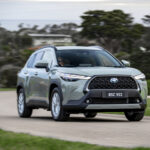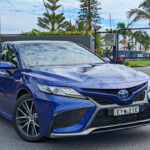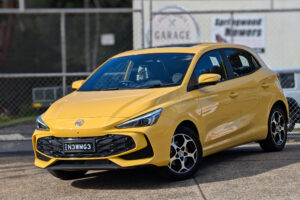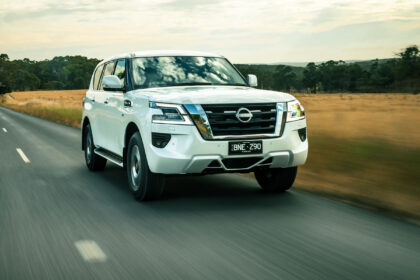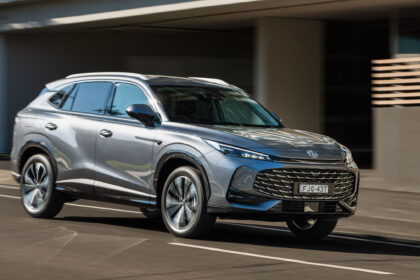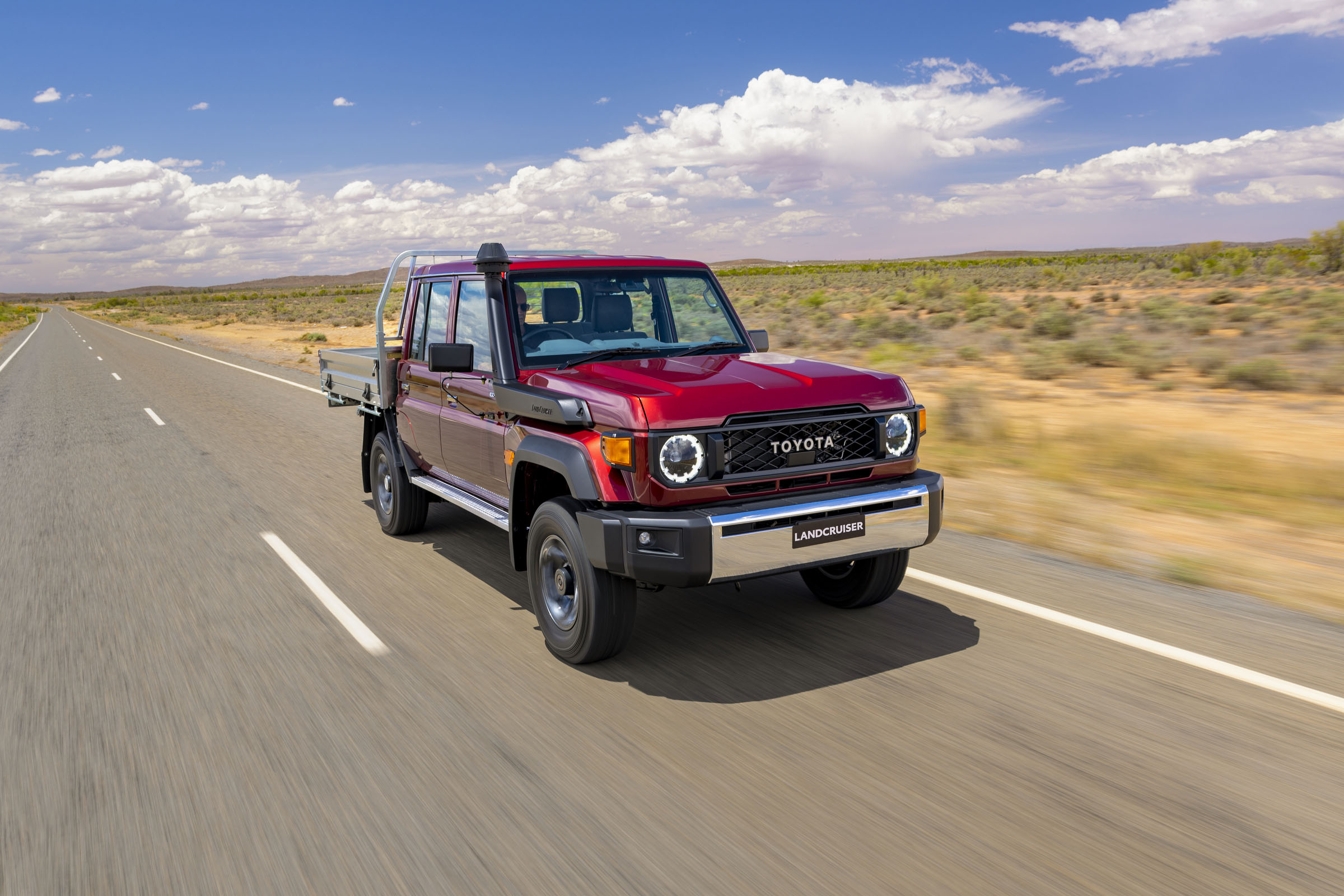
If the new Land Cruiser were any more last century, it would be rolling on solid rubber tyres. After 40 years or so, the 70 Series is still holding its own among the gentrified HiLux, Navara, Ranger and Triton upstarts.
Toyota’s 70 Series has survived beyond its original intended lifespan and 76, 78 and 79 Series Land Cruisers have received ad hoc upgrades from a far-from-enthusiastic maker.
The latest ’79’ is no exception, adding a 2.8-litre turbodiesel engine option from top-selling sibling, the HiLux, mated with a six-speed automatic transmission, to the V8 turbodiesel, five-speed manual variants. In addition, the upgraded 70 Series brings fresh styling, un upgrade in safety and comfort and convenience features, plus a multimedia boost.
On offer are three Single Cab grades, Workmate, GX and GXL – and two grades, Workmate and GXL for the Double Cab, Troop Carrier and Wagon variants. Prices start at $75,600 plus on-road costs for the WorkMate 76 Series Wagon. On test was the GX Cab Chassis, priced at $78,800.
Toyota Australia Vice President Sales, Marketing and Franchise Operations Sean Hanley says: “The introduction of the new powertrain will not only broaden the appeal of the 70 Series range to more customers, but helps reduce weight, improve payload and reduce fuel consumption compared to the V8, delivering on customer demands.”
A cost option for the GX Single-Cab Chassis and WorkMate Double-Cab Chassis is front and /rear diff locks ($1500). Premium paint is $675. The upgraded Land Cruiser 70 Series is covered by a five-year/unlimited kilometre Toyota Warranty Advantage.
This earns an extension to seven years on engine and driveline, with capped-price servicing for the first five years or 100,000 kilometres, whichever comes first, and each six-month 10,000 service costing $525.
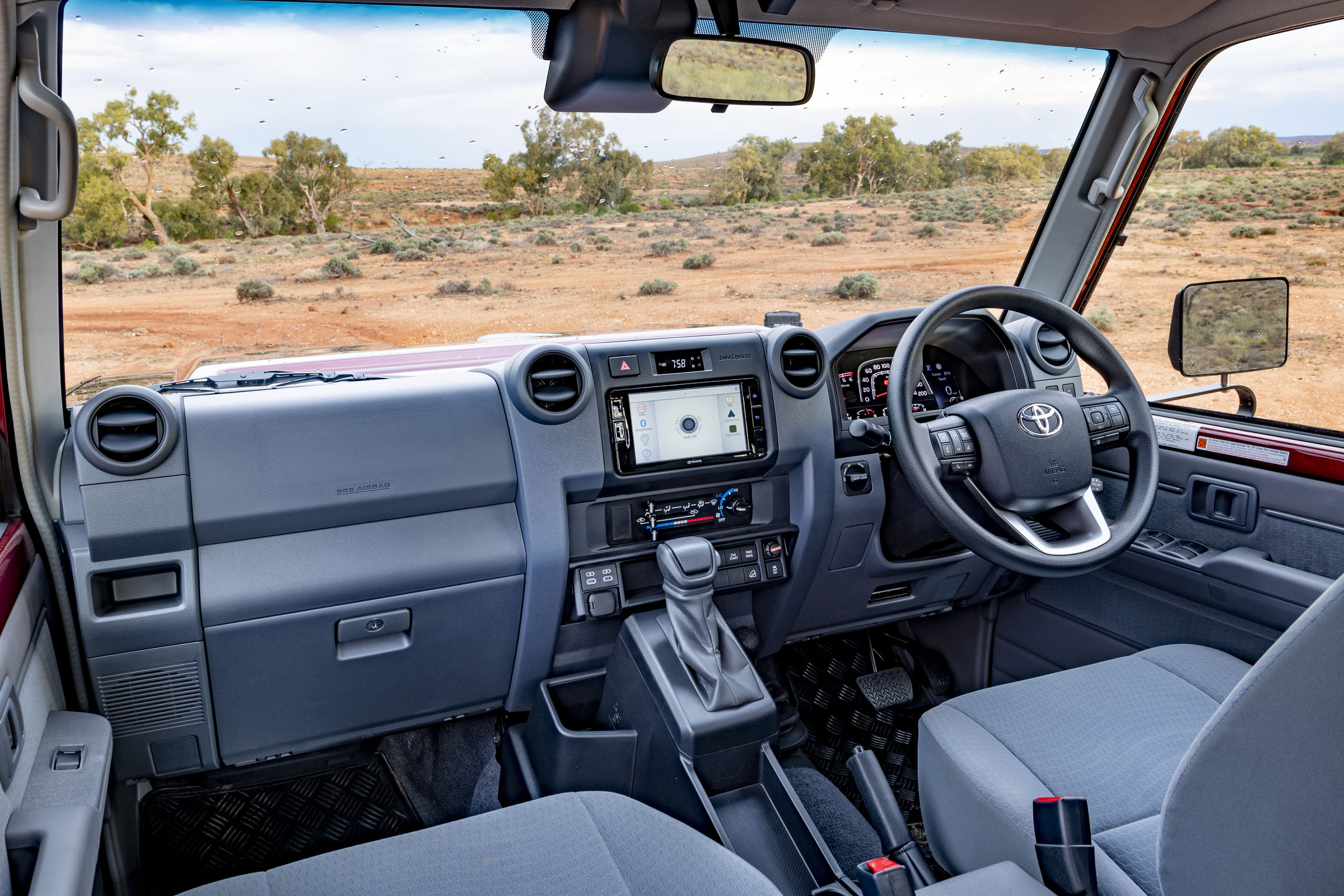
STYLING
The updated LandCruiser 70 Series is immediately recognisable thanks to its updated exterior styling, a reflection of previous generations of LandCruiser. On the other hand, the halogen headlamp cluster has been replaced by circular LED headlamps with manual levelling and automatic high beam, while outboard turning lamps once again hark back to the pre-2007 70 Series.
Automatic high beam dims the intense beams if the system detects a vehicle in front and will automatically reactivate the high beams once the vehicle is gone.
A new square grille with a black mesh pattern and T-O-Y-O-T-A lettering sits above a
three-slot cooling vent inspired by the 75 Series Land Cruiser cousin, with a small hood vent above the grille borrowed from the original 40 Series model.
Wide bumper and black wraparound fenders give the 70 Series a beefy stance and
sense of stability, paired on GX and GXL grades with dark grey metallic 16-inch alloy wheels.
The tester was fitted with a drop-sided flatbed, which was given a fair workout with numerous trips (far more than needed with a conventional tub) to the tip, carting storm damaged landscaping. Also see tow rating (below).
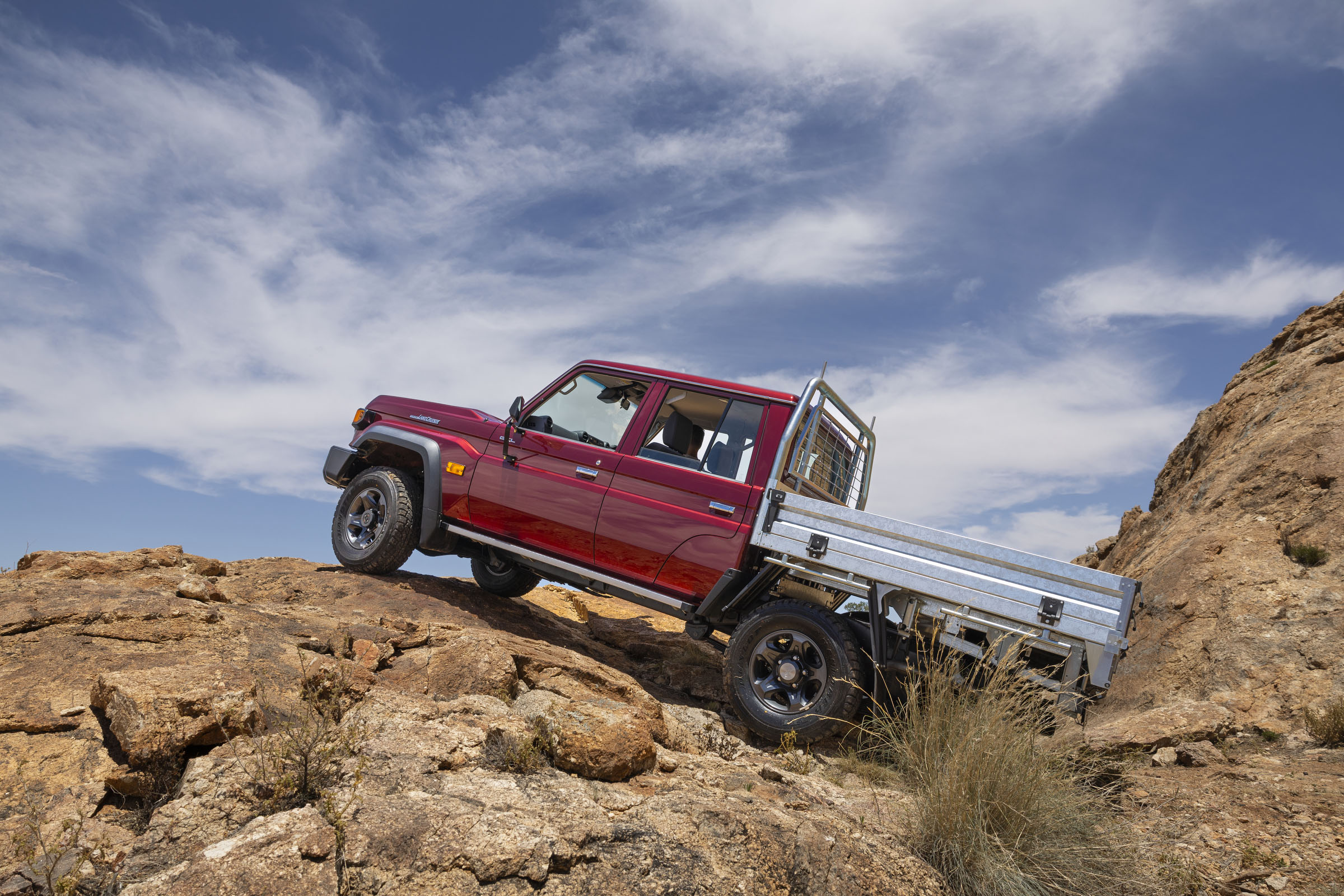
INTERIOR
The new automatic transmission herald’s inbuilt convenience with a new centre console consisting of a lidded centre storage bin, cupholder and compartments taking small items.
WorkMate and GX variants are upholstered in durable vinyl trim, while GXL grades gain grey fabric material.
INFOTAINMENT
The retro-inspired changes continue inside the cabin with a new-look instrument cluster designed to resemble the speedometer of the 40 Series, with the addition of a 4.2-inch colour multi-information display.
A new 6.7-inch multimedia system is compatible with wired Apple CarPlay and Android Auto and offers hands-free smartphone pairing supported by new switches mounted on the steering wheel.
Below the air-conditioning unit, a 12V power outlet, two USB-C ports on GXL and bank of switches provide extra functionality and smartphone charging options.
ENGINES / TRANSMISSIONS
The new 2.8-litre four-cylinder powertrain has been proven over the years in numerous Toyota 4×4 models and produces 150kW at 3400rpm and 500Nm from 1600 to 2800rpm, mated to a six-speed automatic transmission.
Multiple mechanical changes have been made to the engine to ensure optimal cooling and performance in tough conditions and under heavy loads, with all 70 Series models maintaining a strong 3500kg braked towing rating.
SAFETY
The comprehensive update also ushers in new safety features, starting with lane departure alert which issues audible warnings if the system detects the vehicle is leaving its lane.
Road sign assist is linked with the multi-information display to read speed signs and display the current speed limit, which can be used to alert drivers if they are exceeding the speed limit by reversing the colours on the display.
The new features join the existing Toyota Safety Sense features including the Pre-Collision System with pedestrian and daytime cyclist detection and intersection assistance.
DRIVING
The Land Cruiser 79 is no tradie Titan – good for hauling a trailer full of tools during the week, then putting on a new face to show off its shiny self in front of the latte sipping Sunday congregation.
For almost half a century it’s been a dependable piece of agricultural/mining equipment more at home delivering fodder or lick blocks to stock in some far-off paddock. So how does it go on the bitumen? Not the best.
As we know from the past, the Land Cruiser 70 Series is equipped with a part-time 4×4 system with low-range gearing, live axles and front coil suspension, anathema to smooth going on the high street or highway.
The auto transmission shift and 4WD transfer case lever shared handily placed spots on the transmission tunnel, while the former was easily flicked sideways into manual mode. Average fuel consumption hovered between 11.6 and 9.2 litres per 100 kilometres on the road.
Automatic lane-keeping, a feature of many new vehicles, was limited to a ‘beep’ when inadvertent wandering was detected. No overbearing steering action here.
The diesel particulate filter automatically set to work getting rid of crap a couple of times during the test period. It had next to no effect on the vehicle performance while this was going on.
SUMMARY
With tradition to the fore and minor refinements to standard driver systems the LC70 Series has every right to remain the trusted workhorse of the LandCruiser cohort.
RATINGS
Looks: 8/10
Performance: 7/10
Safety: 7/10
Thirst: 5/10
Practicality: 8/10
Comfort: 5/10
Tech: 7/10
Value: 7/10
AT A GLANCE
MODEL LINE-UP
76 Series 2.8L WorkMate Wagon $75,600
76 Series GXL 2.8L Wagon $79,800
78 Series 2.8L Troop Carrier WorkMate $79,200
78 Series 2.8L Troop Carrier GXL $82,500
79 Series 2.8L Single Cab Chassis WorkMate $76,800
79 Series 2.8L Single Cab Chassis GX $78,800
79 Series 2.8L Single Cab Chassis GXL $80,900
79 Series 2.8L Double Cab Chassis WorkMate $79,300
79 Series 2.8L Double Cab Chassis GXL $83,500
Options
Front/rear diff locks $1500
Premium paint $675
Note: These prices do not include government or dealer delivery charges. Contact your local Toyota dealer for drive-away prices.
SPECIFICATIONS (Toyota Land Cruiser 79 2.8L 4-cylinder turbodiesel, 6sp automatic, 4WD Cab Chassis)
ENGINE:
Capacity: 2755cc
Configuration: Four cylinders in-line
Maximum Power: 150kW @ 3000-3400rpm
Maximum Torque: 500Nm @ 1600-2800rpm
Fuel Type: Diesel
Combined Fuel Cycle (ADR 81/02): 9.6 L/100km
Emissions CO2: 201g/km
DRIVELINE: Six-speed electronically controlled automatic, part-time 4WD, dual-range, front and rear lockers
DIMENSIONS, WEIGHT AND CAPACITIES:
Length: 5235mm
Wheelbase: 3180mm
Width: 1870mm
Height: 1945mm
Turning Circle: 14.4 metres
Kerb Mass: 2429kg
Fuel Tank Capacity: 130 litres
BRAKES:
Front: Ventilated disc
Rear: Ventilated disc
STANDARD WARRANTY:
Five years / unlimited kilometres





